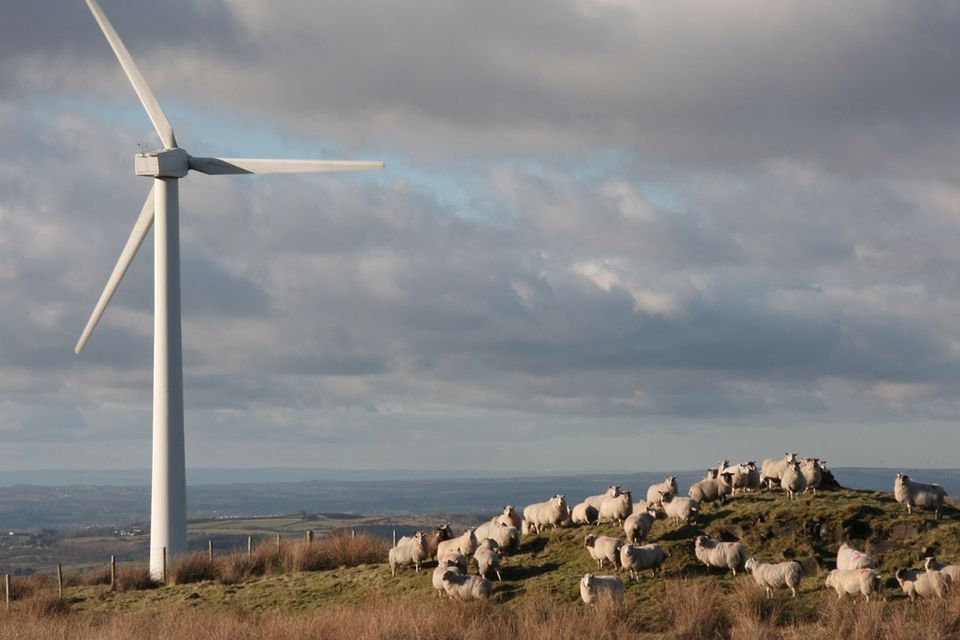Proposals for giant wind farms are shelved
PLANS to erect thousands of wind turbines across the midlands to export power to the UK have been shelved, the Irish Independent has learnt.
An agreement between the Irish and British governments, which would allow power to be traded between both countries, is unlikely to go ahead, meaning at least 40 wind farms planned across five counties will be mothballed.
The lack of agreement comes amid concern from local communities about large-scale farms being developed here to allow the UK meet its legally binding renewable energy targets.
Two companies, Mainstream Renewable Power and Element Power, planned to erect at least 1,000 wind turbines across counties including Kildare, Meath, Westmeath, Offaly and Laois, but their plans are now unlikely to go ahead.
Contacted by the Irish Independent, Energy Minister Pat Rabbitte confirmed that a deal was unlikely.
"At this stage I am doubtful as to whether an inter-governmental agreement can be concluded with the British government," he said.
"I met with (UK Climate and Energy Secretary of State) Minister Ed Davey in Brussels on Tuesday and, following that meeting, I am confirmed in my view.
"In terms of the timelines dictated both by European policy and the exigencies imposed on developers – in other words between now and 2020 – I can't now see an export project as envisaged."
A memorandum of understanding (MOU) was signed between both countries in January 2013, which was designed to facilitate development of trade in renewable energy.
The Liberal Democrats support renewable energy as part of the energy mix, but their powerful coalition partners, the Conservatives, favour nuclear power and fracking.
The UK is obliged to produce 15pc of all power from renewable sources by 2020 but lack of wind farm development means it is unlikely to reach these targets.
Agreement with Irish authorities would have allowed power from as many as 40 wind farms here to be exported, meaning it would not breach its EU limits.
"It's a significant development," a senior government source said.
"The European Commission was very enthusiastic about this and keeps talking about trade in energy and interconnection. This seemed to be a win-win in terms of Ireland having the capacity to supply the energy.
"The UK has an appetite to purchase it to meet their 2020 renewable energy obligations, but it's not going to happen by the 2020 timespan."
Ireland has among the best wind resources in the world, and has the technical capability to create a new traded sector in green energy.
However, the Government has repeatedly said that unless there were significant economic benefits for Ireland, a deal would not go ahead.
The Government had commissioned a cost-benefit analysis on the proposals, which indicated that thousands of construction jobs could be created, along with a valuable stream of commercial rates for local authorities once the turbines were erected.
In addition, given the scale of the project, there was also scope to create a manufacturing hub for turbines and blades.
"You could probably get a supply sector going," a source said. "There's fierce debate about the future direction of energy policy in the UK. If there's a new UK government in a year, it could change."
ISSUES
Mainstream planned to export 5,000MW of energy, enough for some 4.25 million homes, under its Energy Bridge project by 2017. Element Power's Greenwire project involved 40 wind farm clusters capable of transmitting 3,000MW, enough for 2.5 million homes, by 2018.
It is understood both developers have been in contact with officials from the Department of Energy here and the UK's Department of Energy and Climate Change about its plans.
Last night, the UK Department of Energy and Climate Change said it remained "open" to the prospect of trading energy, but any agreement would have to be to the "mutual benefit" of both the UK and Ireland.
Both sides continued to work to resolve issues around "technical potential, timing, cost, potential support mechanisms and regulation", a spokesman added.
As many as 40 wind farms on 20,000 hectares of cutaway bog could have been erected, with the power exported via an undersea cable. The cabling linking the turbines with the UK would all be underground.
The power would be generated from turbines up to 185 metres high, and it was expected that many would be erected on cutaway bog owned by Bord na Mona and sites leased from private landowners.
Both companies have spent significant sums of money already, with Mainstream Renewables previously saying it spent €1.5m buying options from some 500 landowners.
In addition, the European Commission gave a €1.4m grant to Mainstream to cover half the costs of conducting a seabed survey to investigate the best route for the electricity cable.
Join the Irish Independent WhatsApp channel
Stay up to date with all the latest news














